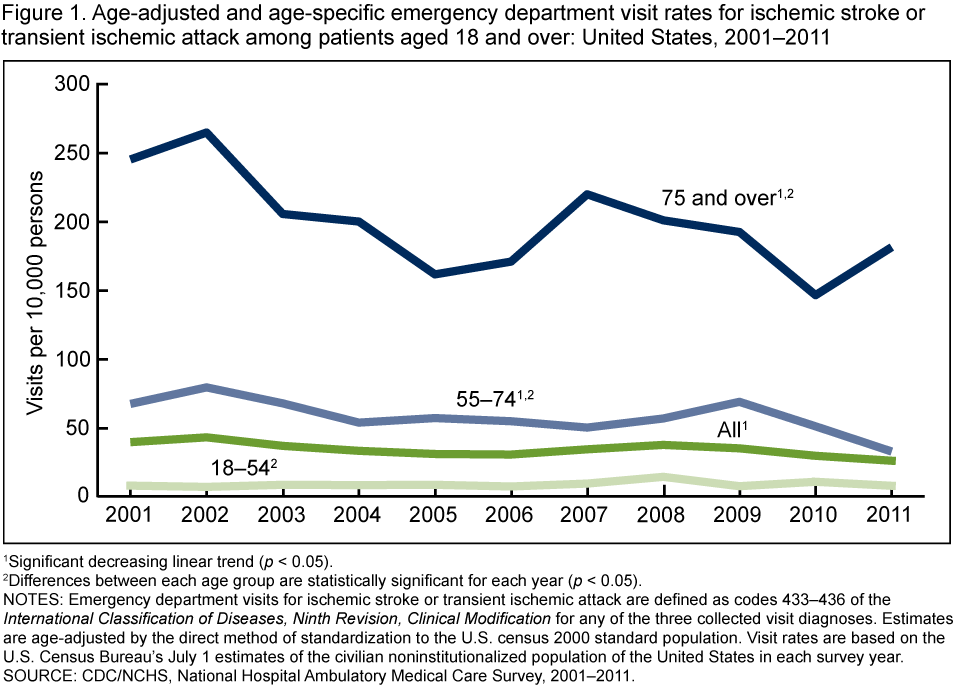Trends in Emergency Department Visits for Ischemic Stroke and Transient Ischemic Attack: United States, 2001–2011
Posted on byStroke is the fifth leading cause of death in the United States. About 87% of all strokes are ischemic strokes. Transient ischemic attacks (TIAs) cause similar symptoms, but the blockage of blood flow to the brain is temporary. However, about one-third of people who have a TIA will have a stroke within 1 year.
Emergency departments play a critical role in the diagnosis and management of ischemic stroke and TIA. The evaluation of these conditions in the emergency department is similar, so they are combined for this analysis.
A new NCHS report presents recent trends in visits to emergency departments for ischemic stroke or TIA.
Key Findings from the Report:
- From 2001 through 2011, the rate of emergency department visits for ischemic stroke or transient ischemic attack (TIA) decreased 35% for patients aged 18 and over and 51% for patients aged 55–74.
- From 2004 through 2011, the percentage of emergency department visits for ischemic stroke or TIA in which the patient arrived by ambulance decreased 41% for patients under 75.
- The percentage of emergency department visits for ischemic stroke or TIA in which a magnetic resonance imaging (MRI) or computed tomography (CT) test was ordered or provided increased 39% from 2001 through 2011.
- The percentage of emergency department visits for ischemic stroke or TIA that resulted in admission or transfer to a hospital increased 10% from 2001 through 2011.
Posted on by
Categories National Ambulatory Medical Care Survey
Page last reviewed: March 31, 2015
Page last updated: March 31, 2015
Content source:
CDC, National Center for Health Statistics


